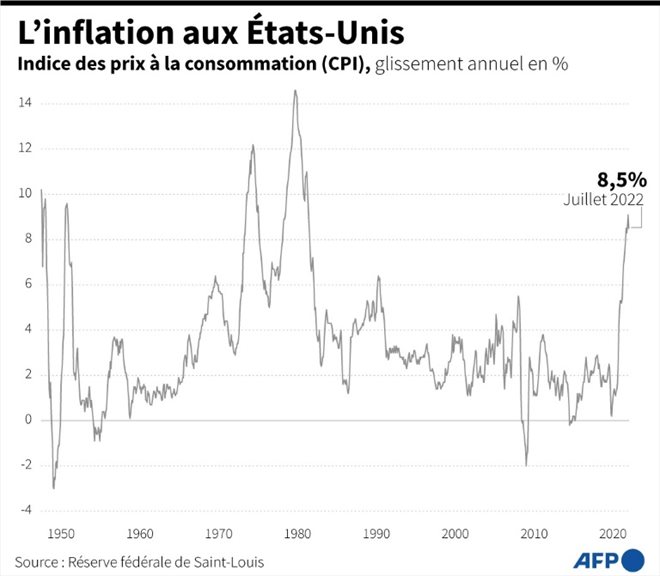U.S. consumers held their spending steady in July as lower gasoline prices allowed them to buy other goods (AFP/Archives/Frederic J. BROWN)
U.S. consumers held their spending steady in July as lower gasoline prices allowed them to buy other goods, and that will weigh in the balance when it comes time for the central bank to operate in another round. of monetary screw in September.
Total spending by U.S. households on stores, gas stations, bars and restaurants was $682.8 billion in July, the same as June, according to Commerce Department data released Wednesday. .
However, this is a little less than the timid increase of +0.1% which was expected by analysts, according to the MarketWatch consensus.
“The retail sales base remains strong,” commented economist Kathy Bostjancic of Oxford Economics.
“People seem to have used some of the savings from lower gas prices to spend more on other items,” Ian Shepherdson of Pantheon Macroeconomics said in a note.
Service stations thus recorded a drop in sales of 1.8% compared to June.
Sales of cars and parts also fell last month (-1.6%). Automobile production has been very slowed down for months by the shortage of semiconductors, but factories performed better in July, according to figures published Tuesday by the Fed, which should allow sales to start rising again from the start. August.
Excluding these two categories, retail sales are up 0.7%.
In particular, American consumers spent more in construction and gardening equipment stores (+1.5%).
These figures take into account the total amount of expenditure, but are not adjusted for inflation, which means that households consumed less for the same amount of expenditure.
Consumption has held up, despite the measures taken by the American central bank (Fed) to slow it down, which should make it possible to curb inflation.
Inflation certainly slowed down in July, to 8.5% over one year, and was even zero over one month. But it remains very high, close to 9.1% in June, a record for more than 40 years.
– Services –
Expenditure in bars and restaurants recorded only a slight increase of 0.1%. Other services, such as plane tickets, hotels, or even leisure activities, are however not included in these figures.
Services had been neglected since the start of the pandemic in favor of goods, but, as the health situation improves, they “will continue to be an engine of consumption growth, as consumers resume more of their spending on services from before the pandemic, especially restaurants and travel”, anticipates Kathy Bostjancic.

Inflation in the United States (AFP/Eléonore HUGHES)
This indicator is closely watched by the US central bank (Fed), which is trying to slow down high inflation by raising its key rates to increase the cost of credit for individuals and professionals.
The goal: to slow down consumption and therefore lower the pressure on prices.
At its next meeting in mid-September, the institution is expected to raise its key rates again, and “today’s solid report keeps the Fed in an aggressive policy tightening mode”, further indicates. Kathy Bostjancic.
Faced with this inflation, consumers are changing their habits. The chief financial officer of the distribution giant Walmart, John David Rainey, thus explained Tuesday more and more marked choices for less expensive items within the same range of products, in particular in food.
US President Joe Biden on Tuesday signed into law his sweeping climate and health investment plan, dubbed the “Inflation Reduction Act”, which includes $370 billion to cut greenhouse gas emissions by 40% by to 2030, and intends to partially correct the huge inequalities in access to care in the United States, in particular by lowering the price of drugs.
© 2022 AFP
Did you like this article ? Share it with your friends with the buttons below.




